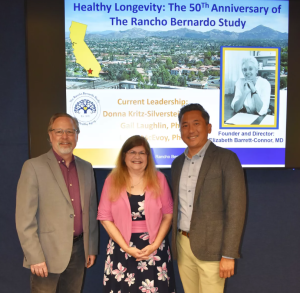In the News
Newsweek – Alzheimer’s: Future Diagnoses May Come Via ‘Simple’ Skin Biopsy
Alzheimer’s disease could one day be diagnosed with a simple skin biopsy instead of invasive spinal taps or expensive brain scans.
This is the promise of scientists from the Salk Institute for Biological Studies, who have discovered stress-sensitive proteins that could act as biomarkers for the disease.
The team found a set of proteins called glycolytic enzymes that actually relocate nearby and inside mitochondria—compartments in cells where critical metabolic processes occur—when cells experience stress.
This reveals a previously unrecognized way cells adapt to damage.
Read more at Newsweek »
Lajolla.ca – La Jolla study: the next Alzheimer’s diagnosis may be skin deep
Salk Institute scientists have found diagnostic potential in mitochondrial stress, while a UCSD study found blood testing improvements for Alzheimer’s.
A new discovery by a team at Salk Institute for Biological Studies could lead to changes in how doctors diagnose Alzheimer’s disease, potentially opening the door for a skin biopsy to be part of the diagnostic tools available for the brain disorder that affects more than 6 million Americans.
Read more at Lajolla.ca »
KOGO-AM – Could a skin biopsy help diagnose Alzheimer’s?
Salk Professor Gerald Shadel is featured on KOGO-AM discussing his latest research.
 Gerald Shadel, along with Anthony Molina and Judith Kritz-Silverstein presented at the 50th anniversary event of the longstanding Rancho Bernardo Study on Healthy Aging. They are working with the Shock Center, which is a collaboration between the Salk Institute, UC San Diego and Sanford Burnham Prebys. Together they are leveraging the long-running human study to enable cellular research on diversity of aging. The Shock Center now collects patient samples from the Rancho Bernardo cohort in an effort to develop human cell models of aging for use by the aging research field, officials said.
Gerald Shadel, along with Anthony Molina and Judith Kritz-Silverstein presented at the 50th anniversary event of the longstanding Rancho Bernardo Study on Healthy Aging. They are working with the Shock Center, which is a collaboration between the Salk Institute, UC San Diego and Sanford Burnham Prebys. Together they are leveraging the long-running human study to enable cellular research on diversity of aging. The Shock Center now collects patient samples from the Rancho Bernardo cohort in an effort to develop human cell models of aging for use by the aging research field, officials said.
Read more in the The San Diego Union Tribune »